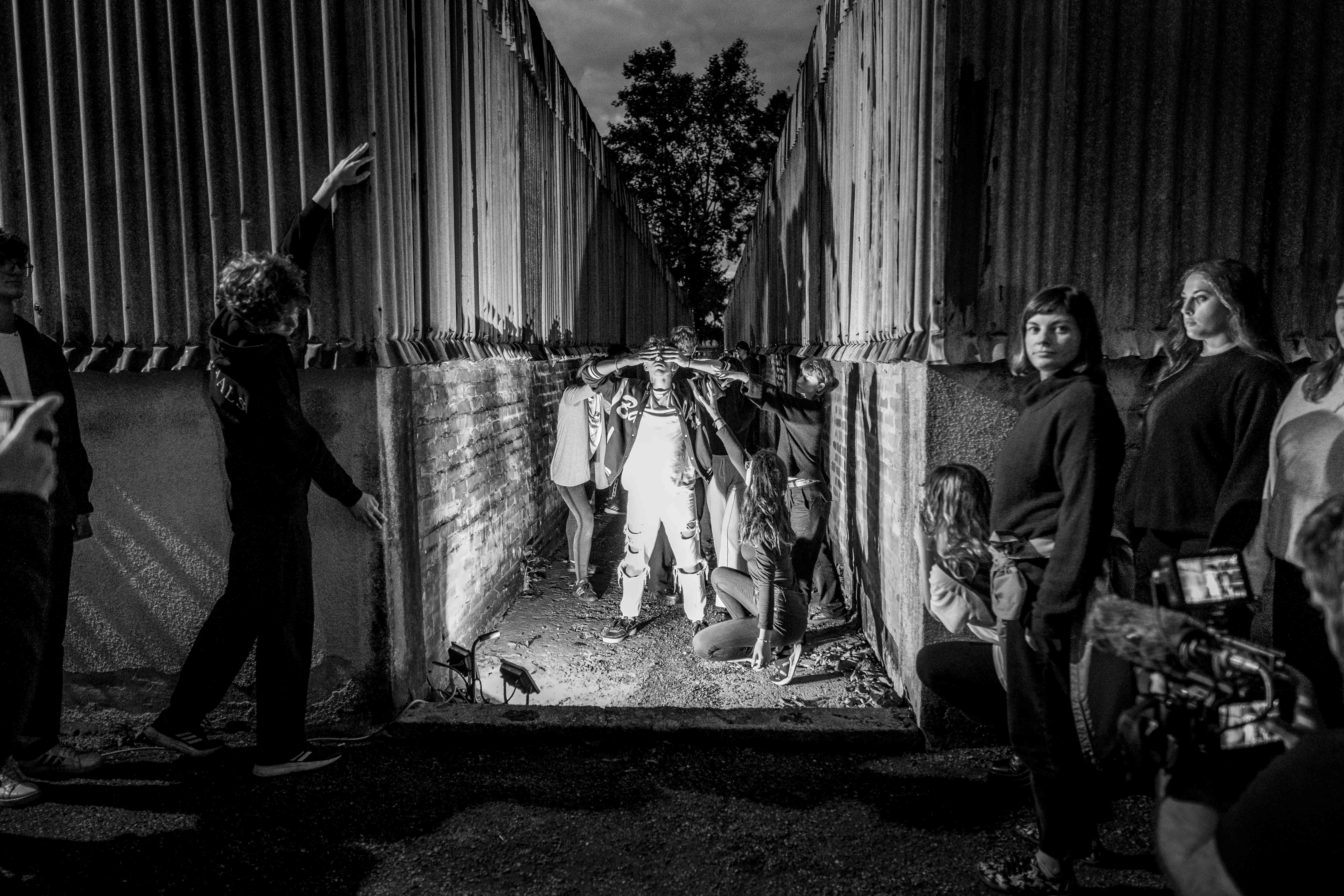Sound in the Silence is an educational project renowned by its cutting-edge methods of teaching at sites that remember European 20th-century history. Organised by the ENRS since 2011, the programme offers an alternative to the traditional school curriculum by combining on-site teaching of history with elements of performative art, intercultural communication and group dynamics management.
This year two groups of secondary students from Croatia, Germany, Poland and Romania participated at two different sites: the House of the Wannsee Conference in Berlin and the concentration camp site in Stara Gradiška in Croatia. In each location they firstly learned about the history of the places they visited. In the second part of the programme they took part in artistic workshops to create site-specific performances revolving around the question “What Is Missing Here.” The workshops were led by Dan Wolf (creative writing), Katarina Rampáčková (choreography) and Sean Palmer (sound and voice). The artistic director of the project was Dan Wolf.
The House of the Wannsee Conference, where the first group worked from 3-10 October 2023, is an elegant villa built in a neo-classical style. On 20 January 1942 fifteen high-ranking Nazi officials gathered here for an organisational meeting to discuss the logistics of the “final solution of the Jewish question,” resulting in the murder of six million Jews. The peaceful aura of the villa with a view to lake Wannsee stands in stark contrast to the genocide that was planned here. And indeed, it took years of effort to officially remember that the details of the Nazi extermination machine were coordinated here by bureaucrats who were often not held accountable for the mass murder they helped to organise. The Memorial and Educational Site House of the Wannsee Conference was established in 1992 and focuses on the role of these perpetrators.
The students, in addition to their work at the Wannsee villa, also took part in workshops at the Jewish Museum in Berlin, and visited memorials dedicated to other minority groups persecuted by the Nazi regime. They transformed the information they gathered during these educational activities into a moving performance at the Wannsee villa and the surrounding park, recalling the voices of both perpetrators and victims, and thematising the harrowing contrast between the peaceful scenery and the mass murder that was organised here.
The second group worked from 16-23 October in Stara Gradiška, a village of 300 inhabitants on the Croatian side of the River Sava, which today forms the border with Bosnia. Stara Gradiška was the site of a concentration camp for Serbian, Jewish and Roma women and children, and part of the Jasenovac concentration camp complex. Few visitors find their way to Stara Gradiška, as most flock to the memorial site for the main camp at Jasenovac thirty kilometres away. The entire camp was operated from 1942-45 by the Ustasha authorities governing the Independent State of Croatia, an ally of Nazi Germany.
Among the structures in Stara Gradiška that still bear witness to the past is the so-called Tower (Kula), a half-ruined brick structure, and a large prison next to it. Both were parts of an eighteenth-century Austro-Hungarian fortress that later was extended by large sheds. From 1942 the site became notorious for maltreatment and cruelty that resulted in the death of thousands of women and children who were imprisoned here under inhuman conditions.
The participants of Sounds in the Silence started with a visit of the memorial and educational centre at Jasenovac and of the Roma Memorial Site in nearby Uštica. They then worked in Stara Gradiška to prepare a performance at the site of the camp. They created a powerful study of the cruelty and fratricidal fights that took place here. Looking for an answer to the research question “what is missing here” the students pointed to kindness as a possible way to heal the wounds of the past.Sound in the Silence 2023 was a part of a two-years project organised in 2022-2023 in Kaunas (Lithuania), Mauthausen (Austria), Berlin-Wannsee (Germany) and Jasenovac (Croatia).
The partners of this year edition of the programme are: Motte Cultural Centre (Germany), Memorial and Educational Site House of the Wannsee Conference (Germany), Jasenovac Memorial Site (Croatia) and Documenta – Centre for Dealing with the Past (Croatia).
Sound in the Silence was co-funded by the European Union.
